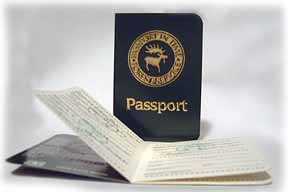PIT's History - Passport in Time
Main menu:
About > PIT's Beginnings
PIT’s History
by Jill Osborn, former PIT National Coordinator
As Gordon Peters, the founder of PIT, tells it, “The idea for PIT came when I started teaching the University of Minnesota–Duluth archaeological field school on Forest Service sites. The field school included volunteers working side by side with students. The naturalists from the nearby resorts would bring their guests out to see ‘Indiana Jones’ at work, and pretty soon, we were the most popular stop on their itinerary! But in 1988, no one signed up for the field school. The resort naturalists and Forest Service interpretive specialists were very disappointed. They offered to recruit volunteers if I would agree to continue archaeological research so they could bring their guests to visit the sites. No problem! We test excavated two sites with help from those volunteers—Pauline Lake and Bearskin Point on the Superior National Forest. That was the beginning of something beautiful!”
 The formal idea for the program came from the Ontario Archaeological Society’s “Passport to the Past” program. “Building on their idea and our early successes at Pauline Lake and Bearskin Point,” confesses Peters, “I coerced and intimidated a few of my colleagues to host volunteer projects on their forests. In 1989, Mark Bruhy on the Nicolet and Chequamegon National Forest's in Wisconsin and Christy Caine on the Chippewa National Forest in Minnesota joined the fray. For the first time, we called the program ‘Passport in Time’ and issued the blue passport, now a collector’s item! In 1990, Mark Hill on the Ottawa National Forest in Michigan, Jack Wynn on the Chattahoochee-Oconee National Forest in Georgia, and Charmaine Thompson on the Uinta National Forest in Utah gave PIT its first national flavor.”
The formal idea for the program came from the Ontario Archaeological Society’s “Passport to the Past” program. “Building on their idea and our early successes at Pauline Lake and Bearskin Point,” confesses Peters, “I coerced and intimidated a few of my colleagues to host volunteer projects on their forests. In 1989, Mark Bruhy on the Nicolet and Chequamegon National Forest's in Wisconsin and Christy Caine on the Chippewa National Forest in Minnesota joined the fray. For the first time, we called the program ‘Passport in Time’ and issued the blue passport, now a collector’s item! In 1990, Mark Hill on the Ottawa National Forest in Michigan, Jack Wynn on the Chattahoochee-Oconee National Forest in Georgia, and Charmaine Thompson on the Uinta National Forest in Utah gave PIT its first national flavor.”After that successful year, Mike Beckes, then archaeologist for the eastern region of the Forest Service, convinced Forest Service leaders in Washington, D.C., that PIT played a valuable role for heritage and the agency. It officially became a national program in 1991. From its humble beginnings in the Great Lakes states, it has now grown to include 117 national forests in 36 states. Gordon Peters retired from his position as an archaeologist on the Superior National Forest in Minnesota in 1998.